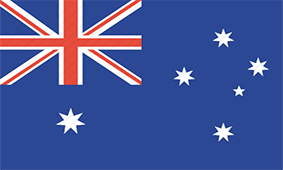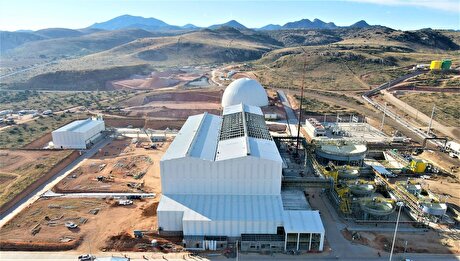
Australia's lithium sector consolidates in weak market

Spodumene prices have fallen to under $600/t from above $900/t in early 2018, while lithium hydroxide prices have fallen to around $12,000/t from $18,000/t a few months ago.
Hundreds of millions of dollars have been wiped off the value of listed lithium producers and explorers as the market comes to terms with the spectre of oversupply and an uncertain near-term demand outlook.
Only one local lithium producer — Alita Resources' Bald Hill mine — has gone into administration, but several others have put a hold on expansion plans and strategies to upgrade their product to higher-value battery material.
Producers such as Pilbara Minerals, Altura Mining and Galaxy Resources have seen their share prices more than halve in the past year as their margins have been squeezed and their business models questioned. Orocobre, an Australian company that produces lithium carbonate in Argentina, has come under similar pressure.
As the world's largest lithium exporter, Australia has a vital role to play in the continued rollout of vehicle electrification and energy storage throughout the world. Its abundance of hard rock lithium, which can be converted into lithium hydroxide for battery manufacturers, has attracted industry leaders such as Chile's SQM, US-based Albemarle and China's Tianqi Lithium to invest heavily in downstream conversion facilities in Western Australia.
But growth in global lithium consumption has slowed in response to challenging economic conditions and policy changes in China. As a result of a shortage of buyers, Chinese companies that convert hard rock lithium concentrate into battery chemicals have been increasing their levels of stock.
"The present lithium oversupply is challenging for market participants, but not wholly unintended — the long-term goal of investment in new and expanded mines has been to position businesses to meet future demand," the Australian government's September Resources and Energy Quarterly said in its analysis of the lithium industry.
While it foresees lithium hydroxide prices rebounding after 2020 as surpluses decline, it expects spodumene ore (the precursor for hydroxide production) to remain under pressure for a bit longer.
Despite difficult trading conditions, it is not all gloom in the Australian lithium industry. Output of 288,000t of lithium carbonate equivalent in the 2018-19 calendar years is seen rising to 358,000t by 2020-21, with export earnings dipping slightly to A$1.3bn ($884mn) from A$1.4bn.
Spodumene ore mining and concentrate processing facilities that have been commissioned over the past two years are ideally placed to benefit from any recovery in prices, while market leaders such as Albemarle, SQM and Tianqi are continuing to invest heavily in downstream conversion capacity.
Sounding an optimistic note for lithium and other battery materials, the Resources and Energy Quarterly said global electric vehicle (EV) sales in the first half of 2019 were 50pc higher than the first half of 2018, with the growth rate accelerating.
"With the pricing of EVs expected to become increasingly competitive with internal combustion engine vehicles over the next few years, lithium consumption volumes are expected catch up with production volumes (based on currently planned mines) as soon as 2021," the quarterly review said.


Trump weighs using $2 billion in CHIPS Act funding for critical minerals

Electra converts debt, launches $30M raise to jumpstart stalled cobalt refinery

Codelco cuts 2025 copper forecast after El Teniente mine collapse

Barrick’s Reko Diq in line for $410M ADB backing

Abcourt readies Sleeping Giant mill to pour first gold since 2014

SQM boosts lithium supply plans as prices flick higher

Pan American locks in $2.1B takeover of MAG Silver

Nevada army depot to serve as base for first US strategic minerals stockpile

Viridis unveils 200Mt initial reserve for Brazil rare earth project

Kyrgyzstan kicks off underground gold mining at Kumtor

Kyrgyzstan kicks off underground gold mining at Kumtor

KoBold Metals granted lithium exploration rights in Congo

Freeport Indonesia to wrap up Gresik plant repairs by early September

Energy Fuels soars on Vulcan Elements partnership

Northern Dynasty sticks to proposal in battle to lift Pebble mine veto

Giustra-backed mining firm teams up with informal miners in Colombia

Critical Metals signs agreement to supply rare earth to US government-funded facility

China extends rare earth controls to imported material

Galan Lithium proceeds with $13M financing for Argentina project

Kyrgyzstan kicks off underground gold mining at Kumtor

Freeport Indonesia to wrap up Gresik plant repairs by early September

Energy Fuels soars on Vulcan Elements partnership

Northern Dynasty sticks to proposal in battle to lift Pebble mine veto

Giustra-backed mining firm teams up with informal miners in Colombia

Critical Metals signs agreement to supply rare earth to US government-funded facility

China extends rare earth controls to imported material

Galan Lithium proceeds with $13M financing for Argentina project

Silver price touches $39 as market weighs rate cut outlook

















